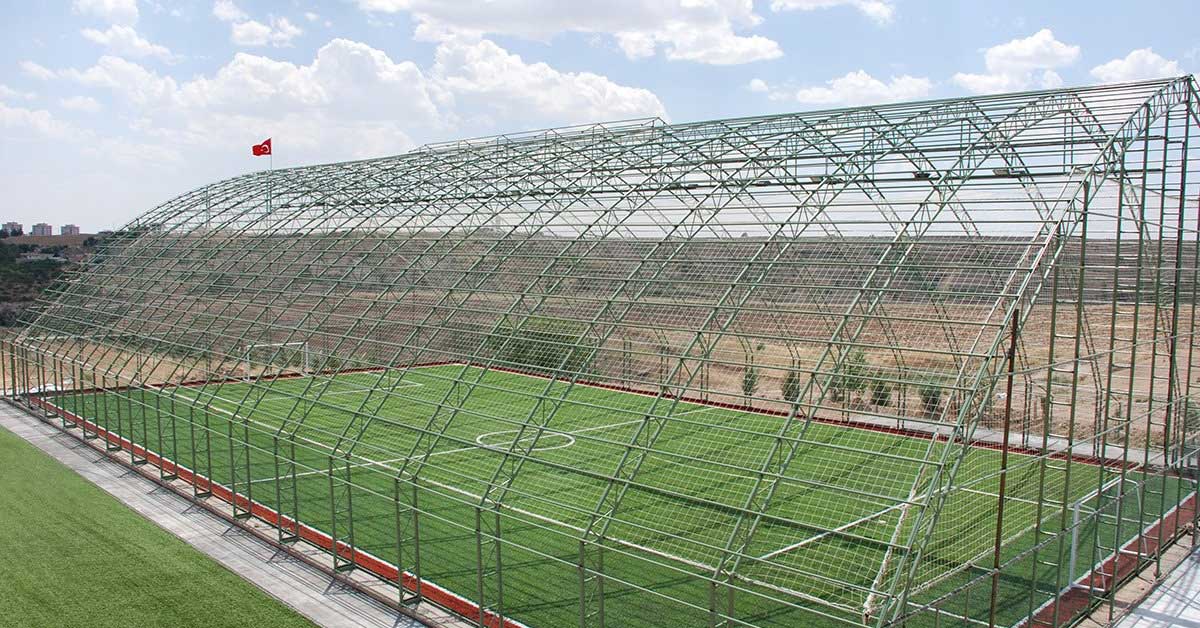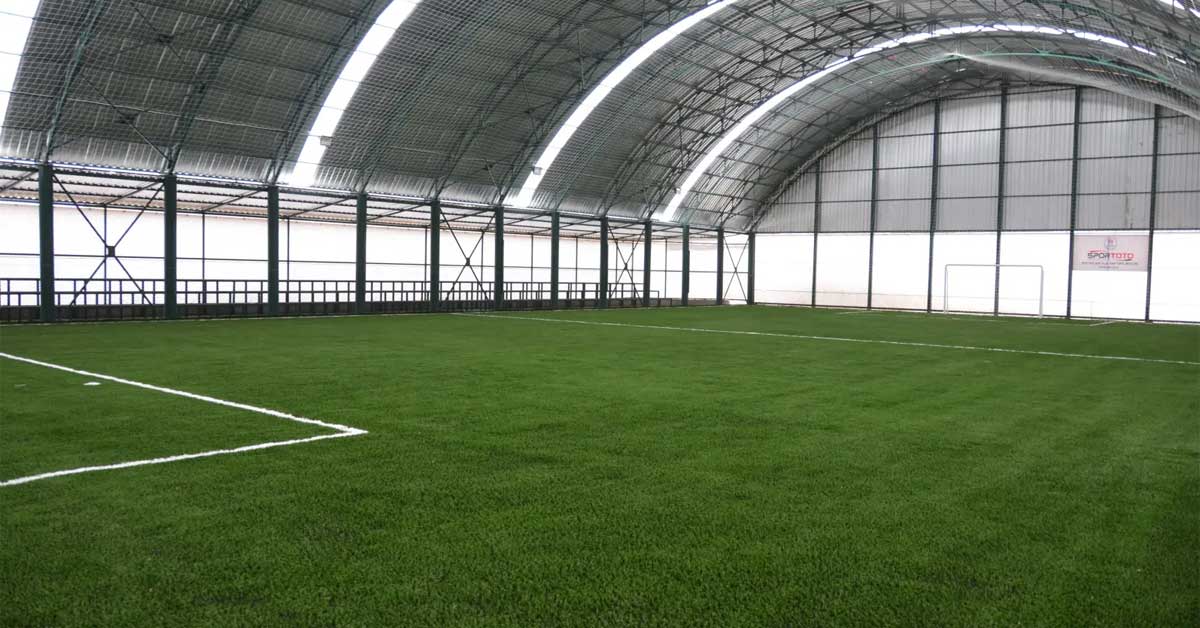The terminology “indoor football field,” synonymous with “indoor soccer field,” opens the gateway to a captivating realm of sports facility innovation. In this extensive guide, we embark on a journey to uncover the myriad advantages that the construction of an indoor football field presents. By gaining profound insights into these benefits, you’re equipped to make strategic decisions concerning the establishment of exceptional sports arenas.
Understanding the Essence of an Indoor Football Field
At its core, an indoor football field, known colloquially as a “covered football field,” is a dedicated sports facility meticulously designed for football matches, training regimens, and recreational play. In stark contrast to traditional outdoor fields, the indoor variant thrives within the shelter of a fully enclosed structure, rendering external weather conditions obsolete in determining the course of play. This meticulously controlled environment not only elevates the quality of matches but also extends consistent training opportunities regardless of the elements.
Diverse Dimensions and Types of Indoor Football Fields
The realm of indoor football fields unveils a plethora of configurations tailored to suit diverse preferences and requirements. Some facilities center their focus on fostering small-sided games, fostering an environment conducive to rapid decision-making and high-speed gameplay. On the other hand, larger establishments replicate the proportions of their outdoor counterparts, enabling full-scale competitive matches. Regardless of size, the defining hallmark of indoor football fields remains consistent—a controlled and adaptable playing domain, free from external interferences.
Encompassing the Advantages of Indoor Football Fields
- Weather Independence: The hallmark advantage of indoor football fields lies in their emancipation from weather-related constraints. Rain, snow, or scorching sun no longer dictate the course of play, ensuring an uninterrupted training and match schedule that bolsters player growth and development.
- Elevated Playing Surface Quality: The controlled environment invariably translates to an impeccably maintained playing surface. The uniform and meticulously curated turf elevates ball control, passing precision, and overall gameplay quality, fostering an environment that nurtures skill refinement.
- Mitigated Risk of Injuries: Indoor football fields often boast cutting-edge shock-absorbing surfaces that mitigate impact on joints and mitigate the risk of injuries. This consideration is pivotal in safeguarding the long-term health and sustained performance of players.
- Diminished Maintenance Demands: A stark contrast to their outdoor counterparts, indoor football fields demand far less maintenance. The absence of constant exposure to the elements translates to reduced upkeep requirements, making them a prudent and cost-effective investment.
- Aesthetically Pleasing Ambiance: The amalgamation of contemporary design and controlled environment culminates in an aesthetic appeal that enhances the allure of both the gameplay and the spectator experience. The professionalism of the surroundings amplifies the overall ambiance, underscoring the significance of the event.

Frequently Addressed Queries
What are the Measurements of an Indoor Football Field?
Dimensions for indoor football fields can vary, but a common standard for small-sided pitches is approximately 30 meters in length and 15 meters in width.
What Constitutes an Optimal Playing Surface for Football?
The quintessential indoor football field necessitates a synthetic turf engineered for resilience, shock absorption, and seamless ball roll, contributing to a premium gameplay experience.
What are the Precise Measurements of Indoor Football Fields?
Standard indoor football field dimensions may vary; however, a compact pitch typically spans around 30 meters in length and 15 meters in width.
Is Planning Permission a Prerequisite for an Indoor Football Field?
Generally, the establishment of indoor sports facilities, including football fields, may be subject to planning permission in adherence to local regulations. Seeking guidance from local authorities or field experts is recommended.
Conclusion
To encapsulate, the advantages of indoor football fields embrace the quintessence of sports evolution. The canvas of weather independence, elevated playing surfaces, minimized injury susceptibility, reduced maintenance requisites, and enhanced aesthetics collectively paints a picture of a sports arena designed for excellence. When the vision is set, and the desire for a state-of-the-art indoor football field beckons, ReformSports.com emerges as the ally of choice. With a commitment to precision, expertise, and a shared passion for sports, ReformSports.com transforms your dreams into a tangible reality—a testament to your dedication to sporting greatness.

